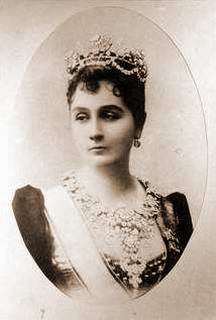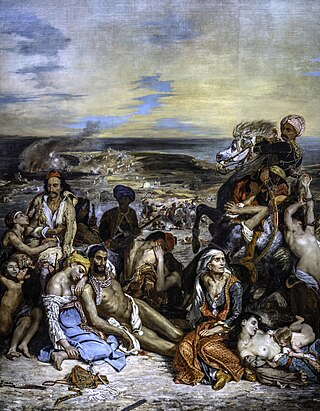Related Research Articles

The concept of Circassian beauty is an ethnic stereotype of the Circassian people. A fairly extensive literary history suggests that Circassian women were thought to be unusually beautiful and attractive, spirited, smart, and elegant. Therefore, they were seen as mentally and physically desirable for men, although most Circassians traditionally refused to marry non-Circassians in accordance with Adyghe Xabze. A smaller but similar literary history also exists for Circassian men, who were thought to be especially handsome.

Slave Trade Act is a stock short title used for legislation in the United Kingdom and the United States that relates to the slave trade.

Slavery in the Ottoman Empire was a major institution and a significant part of the Ottoman Empire's economy and traditional society.

Legal Chattel slavery existed in Saudi Arabia until the 1960s.

Cariye was a title and term used for category of enslaved women concubines in the Islamic world of the Middle East. They are particularly known in history from the era of Ottoman Empire, where they existed until the early 20th century, when the Ottoman Imperial Harem was closed.

Slavery existed in the Sultanate of Zanzibar until 1909. Slavery and slave trade existed in the Zanzibar Archipelago for at least a thousand years. When clove and coconut plantations became a big industry on the islands, domestic slavery expanded to a point where two thirds of the populations were slaves. Zanzibar was internationally known as a major player in the Indian Ocean slave trade, where slaves from the Swahili coast of Eastern Africa were trafficked across the Indian Ocean to Oman in the Arabian Peninsula during the Zanzibar slave trade.

Slavery in Egypt existed up until the early 20th century. It differed from the previous slavery in ancient Egypt, being managed in accordance with Islamic law from the conquest of the Caliphate in the 7th century until the practice stopped in the early 20th-century, having been gradually phased out when the slave trade was banned in the late 19th century. British pressure led to the abolishment of slavery trade successively between 1877 and 1884. Slavery itself was not abolished, but it gradually died out after the abolition of the slave trade, since no new slaves could be legally acquired, and excisting slaves where given the right to apply for freedom. Existing slaves were noted as late as the 1930s.

Chattel slavery existed in the Trucial States (1892–1971), which later formed the United Arab Emirates. The Trucial States consisted of the Sheikdoms Dubai, Abu Dhabi, Sharjah, Ajman, Umm Al Quwain, Fujairah, and Ras Al Khaimah. The region was mainly supplied with enslaved people from the Indian Ocean slave trade, but humans were also trafficked to the area from Hejaz, Oman and Persia. Slaves were used in the famous pearl fish industry and later in the oil industry, as well as sex slaves and domestic servants. Many members of the Afro-Arabian minority are descendants of the former slaves.

Open chattel slavery existed in Kuwait until 1949. Slavery was formally abolished in Kuwait in 1949. In practice, slavery was not actually abolished as such, but the law no longer recognized it after 1949, which meant that every slave who applied for manumission was guaranteered to be freed. Many members of the Afro-Arabian minority are descendants of the former slaves. Slavery of people from Africa and East Asia was succeeded by the modern Kafala system of poor workers from the same region were slaves had previously been imported.

Slavery existed in the territory of the modern state of Syria until the 1920s.

Open chattel slavery existed in the region of Palestine until the 20th-century. The slave trade to Ottoman Palestine officially stopped in the 1870s, when the last slave ship is registered to have arrived, after which slavery appeared to have gradually diminished to a marginal phenomena in the census of 1905. However, the former slaves and their children still continued to work for their former enslavers, and were reported to still live in a state of de facto servitude in the 1930s. Many members of the Black Palestinians minority are descendants of the former slaves.

Slavery existed in the territory of modern Lebanon until the 20th century. It was formally abolished by the French in 1931. Many members of the Afro-Arabian minority are descendants of the former slaves. Slavery of people from Africa and East Asia was succeeded by the modern Kafala system of poor workers from the same region where slaves had previously been imported.

The rulers of the Muhammad Ali dynasty kept a harem during the Khedivate of Egypt (1805–1914).
The Anglo-Ottoman Convention of 1880 also known as Anglo-Ottoman Convention for the suppression of the African traffic and Anglo–Ottoman Convention for the Suppression of the Slave Trade, was a treaty between the United Kingdom of Great Britain and Ireland and the Ottoman Empire from 1880. The Convention addressed the slave trade of the Ottoman Empire, specifically the Red Sea slave trade of Africans across the Red Sea toward the Ottoman province of Hejaz.
The Firman of 1854, sometimes called the Prohibition of the Circassian and Georgian Slave Trade, refers to the Imperial Firman or Ferman (Decree) issued by Sultan Abdülmecid I in October 1854, prohibiting the slave trade in Circassian and Georgian slaves to the Ottoman Empire. It was specifically directed toward the Circassian slave trade in slave girls from the Caucasus, for sexual slavery as concubines in Ottoman harems. It did not ban slavery as such, only the trade in slaves. The decree was only enforced for four years.

The Firman of 1830 refers to the Imperial Firman or Ferman (Decree) issued by Sultan Mahmud II in 1830. It declared the official liberation of Christian slaves of the Ottoman Empire. In practice it concerned the liberation of the Greek war captives wich had been enslaved during the Greek War of Independence (1821–1829).
The Firman of 1857, also referred to as the Prohibition of the Black Slave Trade, refers to the Imperial Firman or Ferman (Decree) issued by Sultan Abdülmecid I in 1857.
The Kanunname of 1889 was a kanunname issued by Sultan Abdul Hamid II on 30 December 1889. It prohibited the importation and sale of African slaves from foreign lands to the Empire. It was introduced due to British diplomatic pressure in anticipation of the Brussels Anti-Slavery Conference 1889–90. The law included the previous anti-slavery decrees in to one code of law. It was the first anti-slavery law that was actually enforced in the Ottoman Empire, and resulted in a reduction of the slave trade.
Frere Treaty was an treaty signed between Britain and the Sultanate of Zanzibar in 1873. Signed by Barghash bin Said of Zanzibar, it formally prohibited all import of slaves to the Sultanate of Zanzibar and forced the closure of the slave market in Zanzibar Stone Town. It made it possible for the British to stop all slave ships in the Indian Ocean, becoming a major blow to the Indian Ocean slave trade.
The Suppression of the slave trade in the Persian Gulf, refers to the Imperial Firman or Ferman (Decree) issued by Sultan Abdülmecid I in 1847. It formally prohibited the import of African slaves to Ottoman territory via the Indian Ocean slave trade of the Persian Gulf. The decree did not address the other slave trade routes trafficking slaves to the Empire.
References
- 1 2 3 Kenneth M. Cuno: Modernizing Marriage: Family, Ideology, and Law in Nineteenth- and Early ...
- 1 2 Cuno, K. M. (2015). Modernizing Marriage: Family, Ideology, and Law in Nineteenth- and Early Twentieth-Century Egypt. Egypten: Syracuse University Press. p. 25
- 1 2 3 Indian Ocean Slavery in the Age of Abolition. (2013). USA: Yale University Press.
- Francesca Biancani: Sex Work in Colonial Egypt: Women, Modernity and the Global Economy
- Seong Hyun Kim: A Comparative Study of Anti-Slavery in 19th Century Middle East and North Africa: The Cases of the Egyptian Khedivate and the Husaynid Beylik of Tunis
- Diane Robinson-Dunn: The Harem, Slavery and British Imperial Culture: Anglo-Muslim Relations in